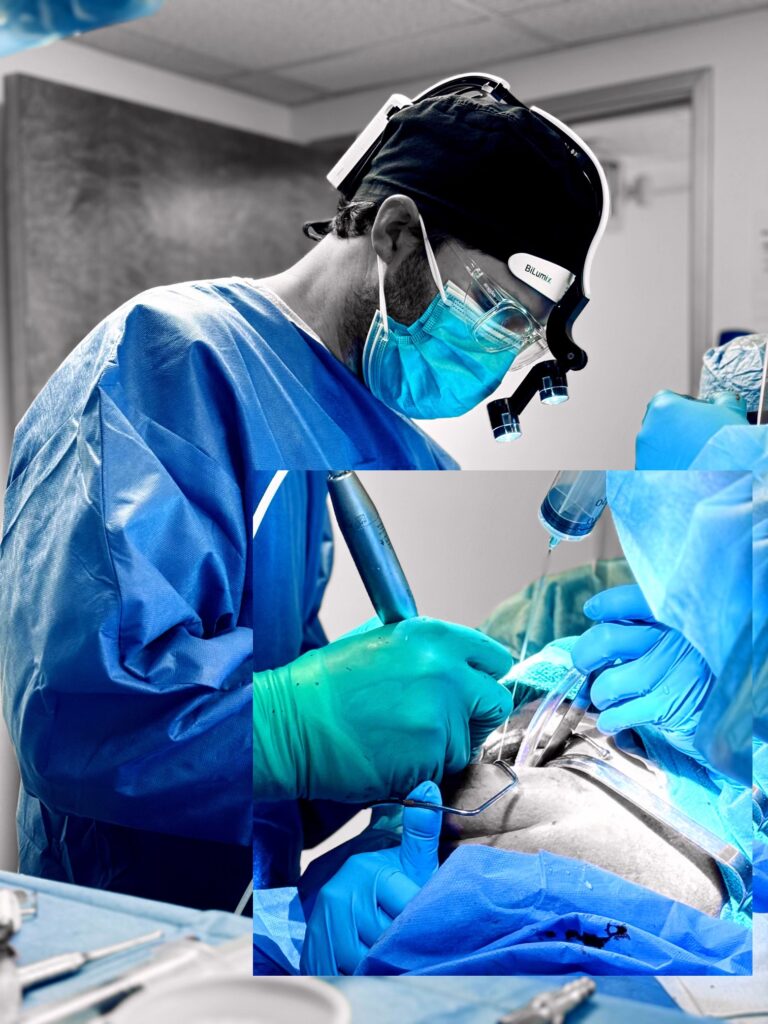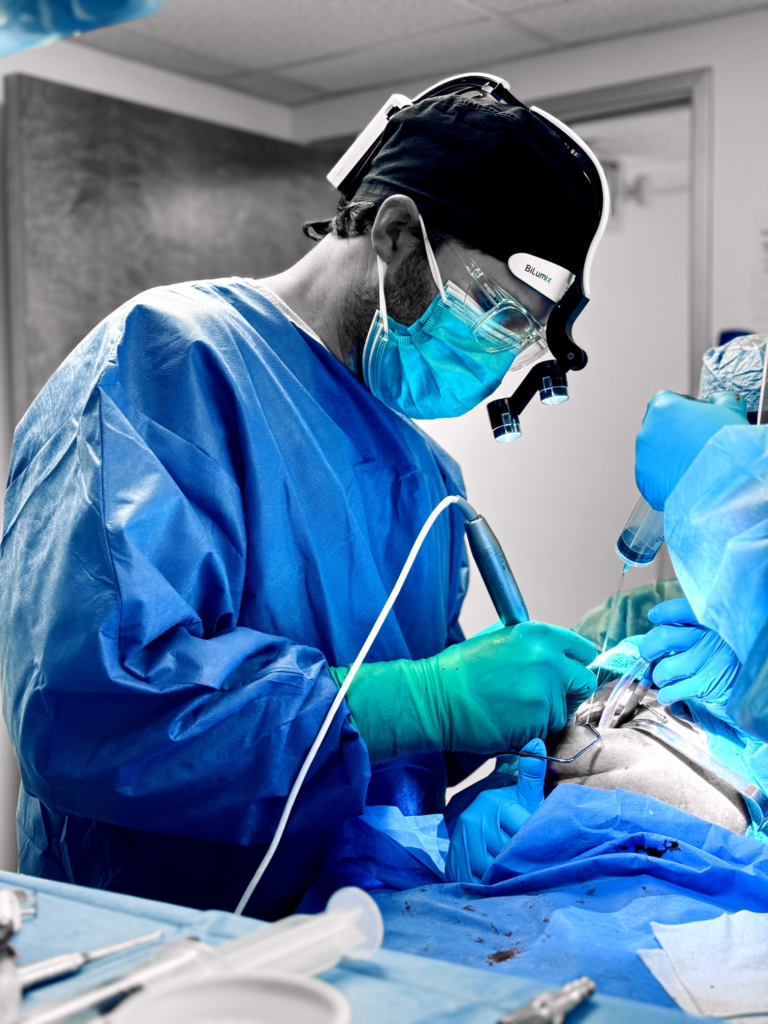While the mandibular arch often presents with more predictable bone volume and density, it comes with its own headaches. Most notably, the tongue and the floor of the mouth. Working around these structures can be annoying, and in some patients with an unusually large tongue or prominent floor of mouth tissue, it can be plain difficult.
There has been many an occurrence in the full-arch world where a practitioner has lacerated the patient’s tongue or damaged the floor of mouth during alveolar reduction – the most likely time for this type of injury to occur.
With enough volume, we will all have a small tissue nick here or there. It just happens.
However, in order to prevent a major iatrogenic injury, I have learned to use two retractors during mandibular reduction. In my experience, despite our best intentions – a retractor will slip, the patient will move, an assistant will lose their position etc., and the one retractor we have… becomes none.
Two is One. One is None.
By having two retractors we always have a fail safe. And believe me, I use that fail safe on a weekly basis. Something always seems to happen where the primary retractor temporarily goes out of commission.
For every single mandibular reduction case I use BOTH a tongue rake (sweetheart retractor) and a malleable retractor.

The tongue rake is positioned with the “rake” on the side I am operating on to move the bulk mass of the tongue out of the way and protect it.
It is positioned ONLY under the tongue and not under the flap. Why? If positioned under the flap it tends to easily move due to the tension from the flap edge and/or “fall back” with any movement from the patient’s tongue.
While the tongue rake moves “most” of the tongue out of the way there will be small portions of the lateral tongue that protrude slightly through the openings in the retraction portion of the rake and if the patient has an unusually large tongue it can literally spill over the sides of the rake.
For this reason, I also utilize a malleable retractor. Once the tongue rake is positioned appropriately, I then place the malleable retractor underneath the gingival flap. I ensure the retractor is positioned and steadied against bone and not depressed into the floor of the mouth. This increases stability and prevents the retractor from itself cutting the vulnerable floor of mouth tissue.
When I have the retractor where I want it I “nod” to my secondary assistant, now positioned at the head of the patient, and this is their cue to take hold of and maintain the retractor in this position during the reduction. As a side note, they use their off hand to also hold the Orringer retractor as a means to protect the lower lip by moving it out of the way of the rotating handpiece.
The assistant NEVER moves the mandibular malleable retractor. I always want to avoid a scenario where the assistant thinks I am moving left with my barrel bur and I decide to move right and we end up with a large laceration to the floor of mouth or tongue.
Therefore, when I am ready to move the reduction out of the field of the current position of the malleable retractor, I MOVE the retractor, reposition it on bone, and then nod again to my assistant who takes hold of the retractor to maintain it in this position.
The malleable retractor provides superior protection to the reflected tissue of the surgical flap. This is especially important in the anterior floor of the mouth where we can encounter vascular bleeds and the posterior floor of the mouth where we may encounter the lingual nerve.
This process is carried around the arch. After one side is completed the tongue rake is “flipped” to the other side and the process is repeated.

While this sounds like a lot happening at once (and it is), with a trained team this entire “dance” and mandibular reduction takes only a couple of minutes.
I have utilized this dual retractor technique for so long that I forget that not everyone performs surgery this way. I was reminded of this recently (and inspired to write this article) following two separate discussions, with two different full-arch surgical colleagues, both of whom had concerns for damage sustained to the tongue and/or floor of mouth during reduction. This was a reminder that even in experienced hands (including my own), these injuries can occur. Working as a team, having the proper instrumentation, and over-engineering protection in this vulnerable anatomic location can help limit this risk. While the dual retractor technique is not the “only” way to safely perform mandibular full-arch reduction, I am convinced that it is one of the best ways to do so.
Two is one. And one really is none.
Matthew Krieger DMD


Lot of hands on retraction – do you have another assistant suctioning? My assistant is dedicating most of her efforts to suctioning. Thank you
I suppose the same could be said about the surgical team: “Two is One…One is None”.
I always have 2 assistants on my surgical team for any full-arch case.
One is positioned chairside with me and one is to my right and focuses mainly on loading and passing drills/implants etc.
The “secondary” assistant on my right moves to the head of the surgical chair during mandibular reduction (what is shown in the photo) to hold the malleable retractor with one hand and the orringer with the other. My “primary” chairside assistant irrigates and suctions.
Here is an article about assistants and efficiency.
Great! I also always have 2 but didn’t think to do it that way for reduction. Great tip, thank you.